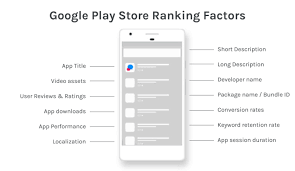In the ever-evolving landscape of digital marketing, data-driven decisions are paramount. Google Search Console (GSC) APIs offer a powerful suite of tools for developers and marketers to access, analyze, and leverage search data efficiently. This blog delves into the capabilities of GSC APIs, their benefits, and practical use cases to help you maximize your SEO efforts.
What Are Google Search Console APIs?
Google Search Console APIs are a set of programmable interfaces that allow developers to access various functionalities and data available in Google Search Console. By utilizing these APIs, users can automate tasks, retrieve search performance data, manage sitemaps, and inspect URLs, among other capabilities.
Key APIs Available
Search Analytics API: Provides detailed insights into how users find your site, including clicks, impressions, click-through rates (CTR), and average positions for specific queries.
Sitemaps API: Allows you to programmatically manage your sitemaps, ensuring that search engines are aware of your latest content updates.
URL Inspection API: Enables you to check the index status of specific URLs, helping you identify and resolve any indexing issues.
Sites API: Helps you manage site properties within Google Search Console, including adding, removing, and listing properties.
Benefits of Using Google Search Console APIs
1. Automated Data Retrieval
Instead of manually checking your site’s performance metrics, GSC APIs allow you to automate the collection of data, saving you time and reducing human error.
2. Integration with Other Tools
You can integrate GSC data with other analytics tools, CRMs, or dashboards to create a comprehensive view of your website’s performance. This synergy enhances your decision-making process.
3. Custom Reporting Solutions
With the ability to programmatically fetch data, you can build tailored reporting solutions that meet your specific needs, ensuring that you focus on the metrics that matter most to your business.
4. Enhanced Site Management
Managing multiple properties becomes seamless with APIs, as you can programmatically add or remove sites and handle sitemaps across various domains.
Practical Use Cases for Google Search Console APIs
1. Automated Reporting Dashboards
Imagine having a dashboard that automatically updates with your website’s search performance data. By leveraging the Search Analytics API, you can pull data daily or weekly and present it visually, allowing you to track performance trends over time.
2. SEO Audits
Using the URL Inspection API, you can create tools to audit your site’s URLs for indexing issues. This can be particularly helpful during major updates or redesigns, ensuring that all pages are properly indexed.
3. Content Strategy Optimization
By analyzing search query data from the Search Analytics API, you can identify which keywords are driving traffic. This insight can inform your content strategy, helping you create more targeted and relevant content that meets user intent.
4. Sitemap Management Automation
For websites with frequent content updates, the Sitemaps API allows you to automate the submission of sitemaps whenever new content is published, ensuring search engines are always informed of your latest pages.
How to Get Started with Google Search Console APIs
Step 1: Set Up Google Cloud Project
- Visit Google Cloud Console: Go to Google Cloud Console.
- Create a New Project: Click on the project drop-down and select "New Project."
- Enter Project Details: Name your project and click "Create."
Step 2: Enable Google Search Console API
- Navigate to APIs & Services: In the left sidebar, click on "APIs & Services" and select "Library."
- Find the Search Console API: Search for "Google Search Console API" and click on it.
- Enable the API: Click the "Enable" button to activate the API for your project.
Step 3: Create API Credentials
- Go to Credentials: Click on "Create Credentials" in the API & Services dashboard.
- Choose Credential Type: Select either "OAuth client ID" or "Service account," depending on your application needs.
- Set Up Consent Screen: For OAuth, configure the consent screen by filling in required details.
- Create Credentials: Complete the credential creation process and download the necessary JSON files for authentication.
Step 4: Authorize Your Application
- Grant Access in GSC: If using a service account, add the service account email to your GSC properties with appropriate permissions.
- OAuth Consent: If using OAuth, ensure your app is set to request the necessary scopes.
Step 5: Make API Calls
Utilize your chosen programming language to interact with the APIs. Google provides client libraries for various languages, simplifying the process.
Example: Using the Search Analytics API
Here’s a simple example in Python:
Conclusion
Google Search Console APIs are invaluable tools for any digital marketer or developer looking to harness the power of search data. By automating data retrieval, enhancing reporting, and streamlining site management, these APIs can significantly improve your SEO strategy. Whether you’re building custom solutions or integrating GSC data into existing workflows, the possibilities are endless. Start exploring these APIs today and elevate your digital presence to new heights!















